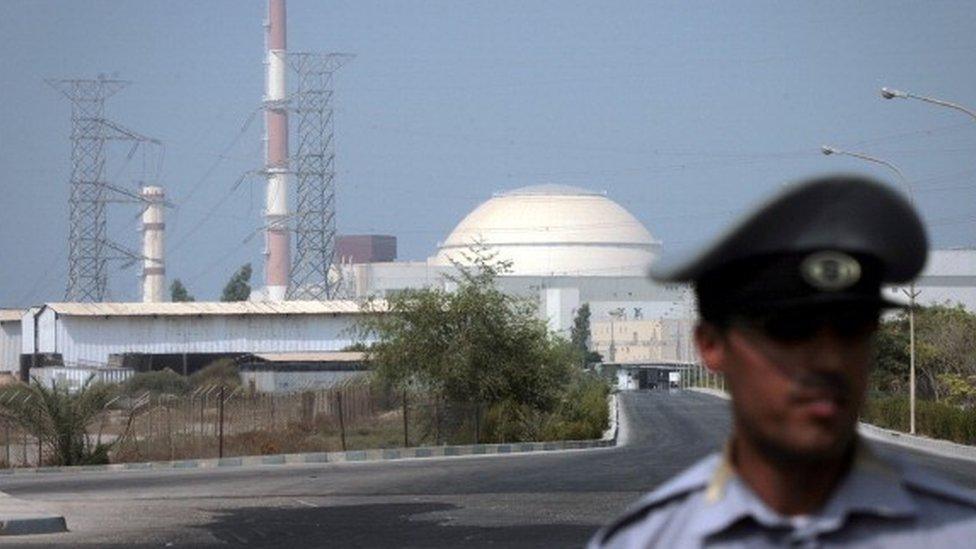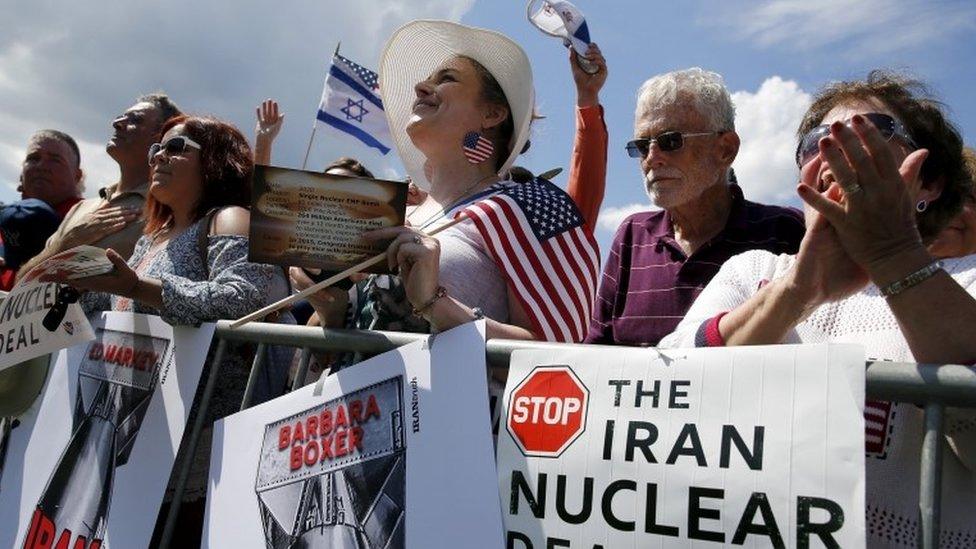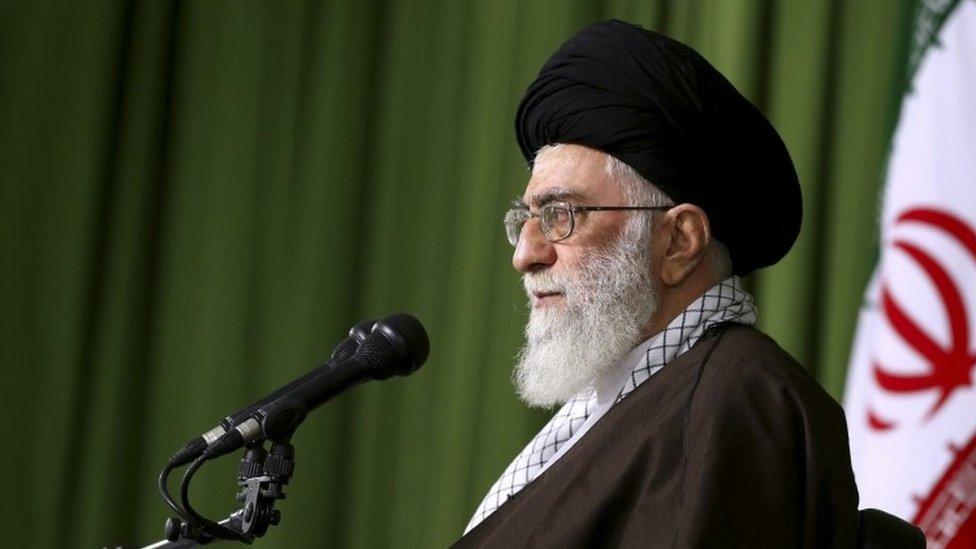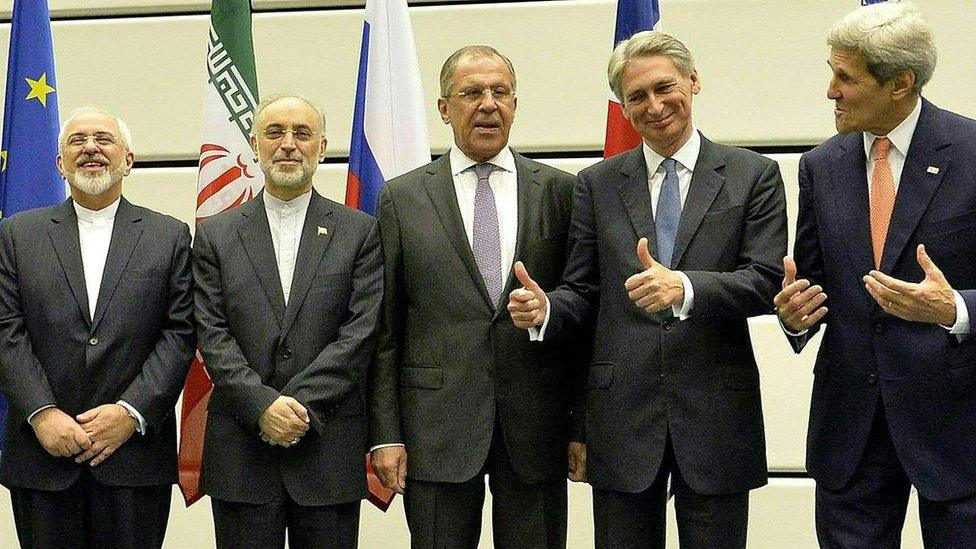Iran nuclear deal: Centrifuge decommissioning 'begins'
- Published

Iran says that its nuclear programme is peaceful
Iran has begun to decommission uranium enrichment centrifuges in order to fulfil the nuclear deal struck with six world powers in July, its nuclear chief has announced during a visit to Japan.
Ali Akbar Salehi said initial work to reduce the number of centrifuges had started, but would take some time.
Iran insists that its nuclear programme is entirely peaceful.
The July agreement involves the lifting of sanctions in return for Iran curbing sensitive nuclear activities.
The deal between the so-called P5+1 - the US, UK, France, China and Russia plus Germany - was reached after 20 months of negotiations.

Hardliners in both Iran and the US are opposed to the deal

Iran's highest authority, Supreme Leader Ayatollah Ali Khamenei, conditionally approved the nuclear deal last month
Mr Salehi was quoted by Japan's Kyodo news agency, external as saying that work had begun on reducing the number of active centrifuge machines.
They are key to the process of enriching uranium, and limiting their number is a central part of the deal.
Confirmation that the work is underway also appears to have come in a separate development in Tehran.
About 20 hardline MPs have written to President Hassan Rouhani to complain that work to dismantle centrifuges in two enrichment facilities at Natanz and Fordow is progressing too quickly.
Iran's highest authority, Supreme Leader Ayatollah Ali Khamenei, conditionally approved the nuclear deal last month.
The Iranian parliament also approved the deal last month, as Republicans failed to block the accord in the US Congress.


The nuclear deal came after long negotiations
Read more

The UN Security Council passed seven resolutions between 2006 and 2015 requiring Iran to stop producing enriched uranium - which can be used for civilian purposes, but also to build nuclear bombs.
Four of the resolutions imposed sanctions in an effort to persuade Iran to comply.

Key areas of the nuclear deal:
Uranium enrichment: Iran can operate 5,060 first generation centrifuges, configured to enrich uranium to 3.67%, a level well below that needed to make an atomic weapon. It can also operate up to 1,000 centrifuges at its mountain facility at Fordow - but these cannot be used to enrich uranium.
Plutonium production: Iran has agreed to reconfigure its heavy water reactor at Arak, so that it will only produce a tiny amount of plutonium as a by-product of power generation, and will not build any move heavy water reactors for 15 years.
Inspections: International monitors will be able to carry out a comprehensive programme of inspection of Iran's nuclear facilities.
Possible military dimensions: Iran will allow foreign inspectors to investigate the so-called "possible military dimensions" to its programme by December. This should determine whether the country ever harboured military ambitions for its nuclear programme - a claim it has always strenuously denied.
Sanctions: All EU and US energy, economic and financial sanctions, and most UN sanctions, will be lifted on the day Iran shows it has complied with the main parts of the deal.